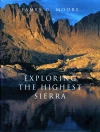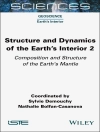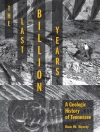Grand Cayman, Little Cayman, and Cayman Brac are, in reality, the summits of independent fault blocks that rise from the depths of the Caribbean Sea. This book traces the geological evolution of these islands over the last 30 to 35 million years. The balance between deposition of carbonate sediments and karst development of the exposed land was dictated by the interaction between ever-changing sea levels and vertical tectonic movement of the fault blocks. Today, drinking water needed for the ever-increasing populations of the islands is supplied largely by desalinization plants that are located in accord with a detailed knowledge of the bedrock.
This book is based on an extensive data base that has been assembled over the last 40 years of field work and laboratory analyses. Noteworthy aspects of this database include:
- Approximately 60 visits to the islands over last 40 years – sampling and documentation of virtually every accessible outcrop on the islands (including some that no longer exist). Most samples have been fully documented petrographically and geochemically.
- Data from 120 wells that have been drilled to depths up to 245 m (most less than 125 m). Wells have been cored and/or chip sampled. Full documentation of drilling histories, XRD analyses of samples, extensive geochemical analyses for major and minor elements, stable isotopes, 87Sr/86Sr ratios, and Rare Earth Elements from numerous samples.
- Mapping and sampling of modern sediments, including sediment cores, from most of the lagoons around Grand Cayman.
- Extensive thin section petrography, scanning electron microscope, and electron microprobe analyses of the dolostones and limestones that form the bedrock of the islands.
- Samples and data collected from numerous caves on Grand Cayman and Cayman Brac have been used to track their developmental history.
- Detailed analyses of phosphates collected from Little Cayman.
- Detailed analyses of terra rossa collected from each of the islands.
Tabla de materias
Introduction.- Tectonic Setting of Cayman Islands.- Stratigraphic framework.- The Bluff Group.- The Ironshore Formation.- Modern marine sediments of the Cayman Islands.- Dolomitization of the Bluff Group.- Karst and caves.- Phosphates, terra rossa and mangrove peat.- Modern Hydrology.- Summary Information Database.
Sobre el autor
Dr. Brian Jones’ main areas of interest include carbonate sedimentology and diagenesis, stratigraphy, and palaeontology. Presently, these interests are being directed to two main areas of research. One research project is concentrated on all aspects of the Oligocene, Miocene, Pliocene, Pleistocene, and Holocene carbonate successions of the Cayman Islands with the view of determining their geological evolution. The other research project is focused on the precipitates (carbonates and silica) and microbes that are found around hot-springs throughout the world. Dr. Jones’ research routinely employs light, fluorescence, cathodoluminescence and scanning electron microscopy.












